
Shutterstock
Ancient temples are incredible places where history, architecture, and spirituality come together. Built by civilizations from thousands of years ago, these sites have managed to survive the test of time and still inspire wonder today. Each temple tells its own story, from the gods it was dedicated to, to the people who worshipped there and the architects who made it a reality.
Even after centuries, these structures give us a unique window into the beliefs and lives of our ancestors. Visiting these ancient temples feels like stepping back in time, experiencing the world as they once did.
Karnak Temple, Egypt

Shutterstock
The Karnak Temple in Luxor is a grand architectural feat, known as the largest religious complex ever built in ancient Egypt. Dedicated to the gods Amun, Mut, and Khonsu, its construction began over 4,000 years ago and continued through various dynasties. The Hypostyle Hall, with its 134 massive columns, is one of the most famous structures within the temple, showcasing intricate carvings of deities and pharaohs. Visitors today can walk the vast grounds, exploring the many sanctuaries, pylons, and statues that make up this monumental tribute to ancient Egyptian religious life.
The Parthenon, Greece

Shutterstock
Perched on the Acropolis in Athens, the Parthenon is a symbol of classical Greek civilization and its architectural excellence. Built in the 5th century BCE, it was dedicated to the goddess Athena, the city’s patron deity. The temple is a masterpiece of Doric architecture, with majestic columns and intricately carved friezes depicting Greek mythology. Despite centuries of war and natural disasters, the Parthenon remains a powerful symbol of ancient Greek culture and influence.
Angkor Wat, Cambodia

Shutterstock
Angkor Wat in Cambodia is a magnificent temple complex and the largest religious monument in the world. Originally built in the early 12th century as a Hindu temple dedicated to Vishnu, it later became a Buddhist temple and remains active to this day. The temple’s intricate carvings and towering spires represent Mount Meru, the mythical home of the gods in Hindu cosmology. Surrounded by a vast moat, Angkor Wat is not only a marvel of Khmer architecture but also a spiritual site attracting millions of visitors every year.
Luxor Temple, Egypt

iStock
Luxor Temple, located in the heart of Luxor, Egypt, was built around 1400 BCE and remains one of the most striking monuments of the ancient world. Unlike other temples dedicated to specific deities, it was constructed to honor the divine nature of kingship itself. The grand avenue of sphinxes leading up to the entrance and the colossal statues of Ramses II create a majestic atmosphere. Today, Luxor Temple stands as a testament to Egypt’s grandeur and enduring legacy in human history.
Temple of Apollo at Delphi, Greece

Shutterstock
The Temple of Apollo at Delphi was a major spiritual center in ancient Greece, housing the Oracle of Delphi, who spoke on behalf of the god Apollo. Pilgrims traveled from all over the ancient world to seek guidance from the Oracle, whose words were believed to be divinely inspired. Built in the 4th century BCE, the temple was set against a stunning mountainous backdrop, adding to its mystical allure. Even in ruins, Delphi’s Temple of Apollo is a mesmerizing site, embodying the wisdom and mystery of Greek mythology.
The Golden Temple of Amritsar, India

Shutterstock
The Golden Temple, or Harmandir Sahib, in Amritsar, India, is the holiest shrine in Sikhism and a symbol of peace and unity. Its gold-covered exterior and serene location in the middle of the Amrit Sarovar, or Pool of Nectar, create a breathtaking view. Constructed in the 16th century, the temple has faced numerous attacks, symbolizing resilience in the face of adversity. Today, it welcomes millions of pilgrims and visitors who come to experience its beauty and spiritual significance.
Borobudur Temple, Indonesia

Shutterstock
Borobudur, located in Central Java, Indonesia, is the largest Buddhist temple in the world, dating back to the 9th century. Built as a pyramid-like structure with nine stacked platforms topped by a central dome, it symbolizes the journey to enlightenment. Each level of the temple is adorned with thousands of carvings depicting Buddhist teachings and hundreds of statues of Buddha. Buried under volcanic ash for centuries, Borobudur was rediscovered in 1814 and remains a cultural treasure and UNESCO World Heritage site.
Temple of Artemis at Sardis, Turkey
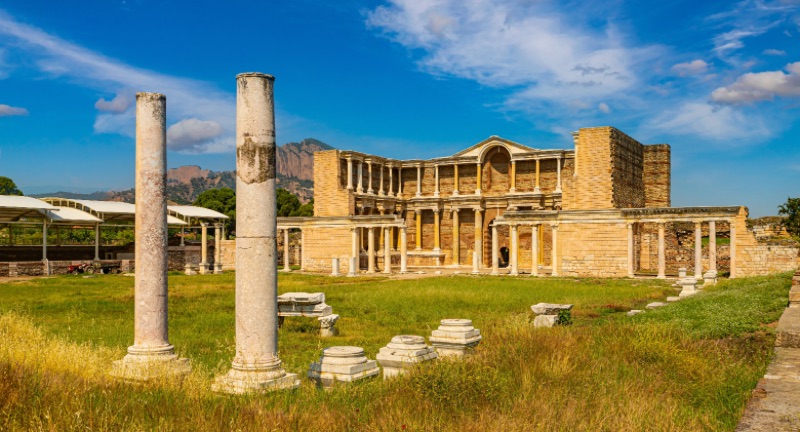
Shutterstock
The Temple of Artemis at Sardis in modern-day Turkey dates back to the 3rd century BCE, representing the grandeur of Hellenistic architecture. Dedicated to Artemis, the goddess of the hunt, this temple was once part of a bustling ancient city and sanctuary. Although partially ruined, its remaining columns and foundations hint at the scale and importance of the temple. The site offers valuable insight into ancient religious practices and the architectural styles of the Greek Empire.
Temple of Hatshepsut, Egypt

Shutterstock
The Temple of Hatshepsut in Deir el-Bahri, Egypt, is a magnificent tribute to one of Egypt’s most powerful female pharaohs. Built in the 15th century BCE, it features terraces, colonnades, and statues that reflect Hatshepsut’s unique influence and legacy. Set against steep cliffs, the temple blends naturally with the surrounding landscape, creating an awe-inspiring view. This structure not only celebrates her reign but also showcases the architectural ingenuity of ancient Egypt.
Great Temple of Ramses II at Abu Simbel, Egypt
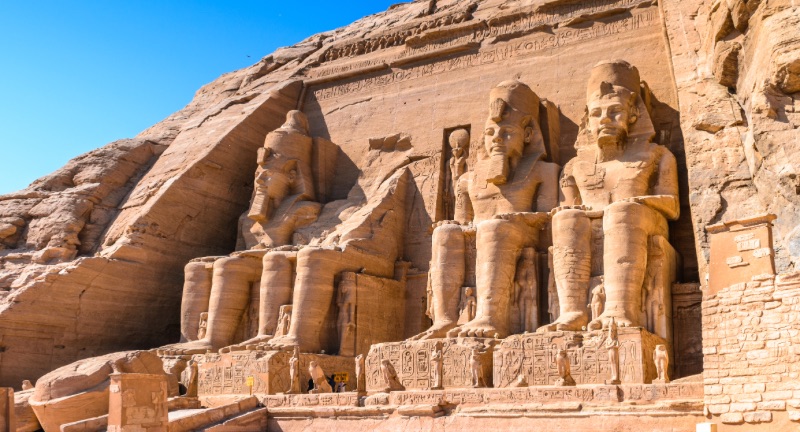
Shutterstock
The Great Temple of Ramses II at Abu Simbel is a monumental rock-cut temple dedicated to Ramses II and his queen Nefertari. Built in the 13th century BCE, it features colossal statues of the pharaoh, symbolizing his power and divine status. Remarkably, the temple was engineered to align with the sun on specific days, illuminating the inner sanctum. In the 1960s, it was moved to save it from flooding, reflecting its value as a cultural treasure.
Temple of Hephaestus, Greece

Shutterstock
The Temple of Hephaestus in Athens is a remarkably well-preserved ancient Greek temple, dedicated to the god of metalworking and craftsmanship. Built around 415 BCE, it showcases the strength and simplicity of Doric architecture, with detailed friezes depicting Greek myths. Its survival is largely due to its conversion into a Christian church, which protected it from destruction. Today, it stands as a fine example of classical Greek architecture and an enduring symbol of Athenian culture.
Prambanan Temple Complex, Indonesia

Shutterstock
Prambanan in Central Java, Indonesia, is a 9th-century Hindu temple complex dedicated to the gods Shiva, Brahma, and Vishnu. Known for its pointed architecture and elaborate carvings, it’s a stunning example of ancient Indonesian craftsmanship. Despite multiple earthquakes over the centuries, much of the complex remains standing, a testament to its robust construction. Visitors can explore its detailed reliefs, which depict scenes from Hindu epics, making it an important cultural and religious site.
Temple of Olympian Zeus, Greece
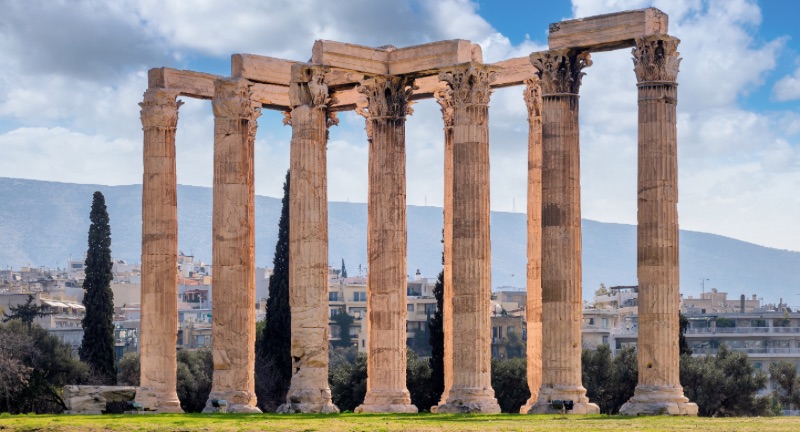
Shutterstock
The Temple of Olympian Zeus in Athens was one of the largest temples of its time, dedicated to Zeus, the king of the Greek gods. Construction began in the 6th century BCE but wasn’t completed until 600 years later under Roman Emperor Hadrian. Though only a few of its colossal columns remain, they still showcase the grandeur and ambition of ancient Greek architecture. The site continues to attract visitors who marvel at its scale and historical significance.
Dendera Temple Complex, Egypt
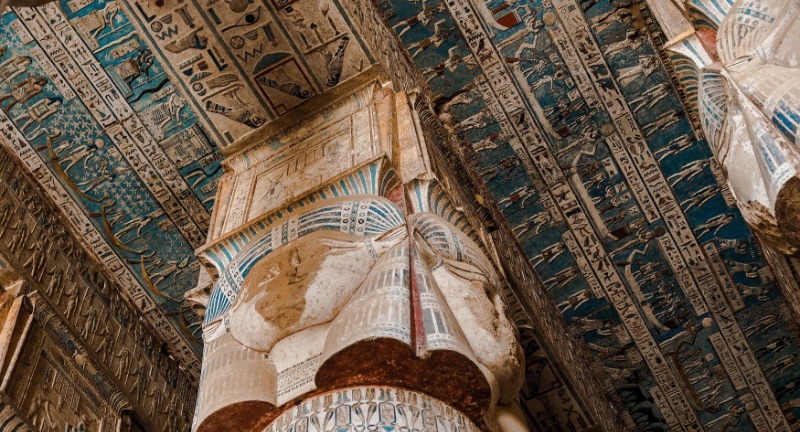
Shutterstock
The Dendera Temple Complex is one of the best-preserved temples in Egypt, primarily dedicated to Hathor, the goddess of love and motherhood. Built in the 1st century BCE, it features vibrant carvings, painted ceilings, and an intricately decorated Hypostyle Hall. Its well-preserved reliefs depict scenes of gods and rituals, offering insight into ancient Egyptian religious life. This stunning temple is a vivid reminder of the artistry and spiritual devotion of Egypt’s past.
Temple of Poseidon at Sounion, Greece
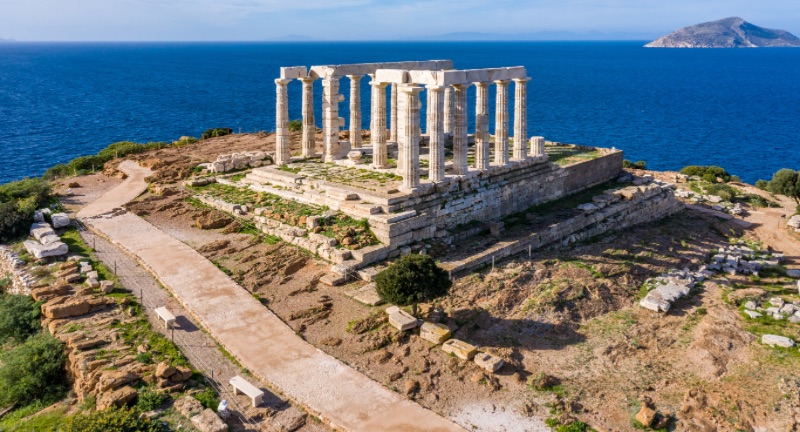
Shutterstock
The Temple of Poseidon, perched on Cape Sounion, overlooks the Aegean Sea and offers a breathtaking view of the sunset. Built around 440 BCE, it was dedicated to Poseidon, god of the sea, serving as a beacon and a place of worship for sailors. The temple’s columns bear inscriptions, including one by Lord Byron, adding to its historical allure. It remains a popular destination for visitors who come to experience its serene beauty and scenic location.
Madain Saleh, Saudi Arabia
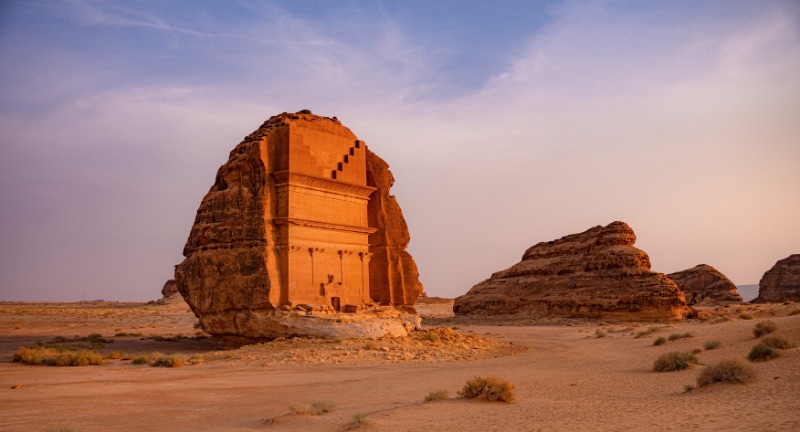
Shutterstock
Madain Saleh, also known as Al-Hijr, is an ancient city in Saudi Arabia with rock-cut tombs and temples that mirror the architecture of Petra. Dating back to the 1st century CE, it was a key trading center for the Nabateans. Its sandstone structures and intricate carvings offer a glimpse into the life and art of this ancient civilization. Today, Madain Saleh is recognized as a UNESCO World Heritage site, preserving the legacy of Nabatean culture.
Bagan Temple Complex, Myanmar
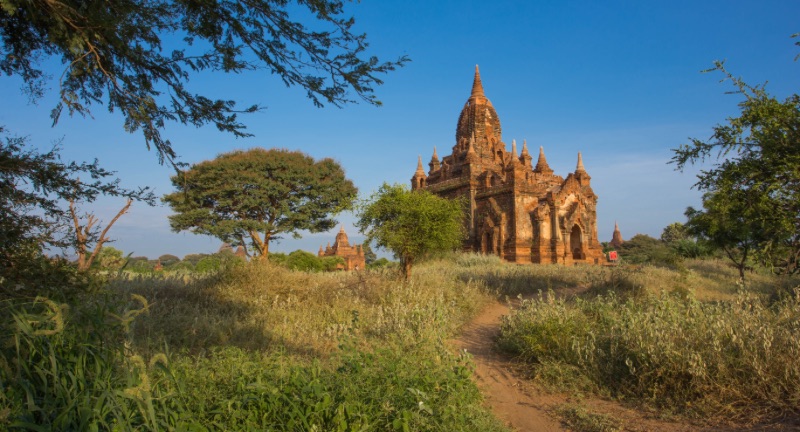
Shutterstock
Bagan in Myanmar is a vast archaeological site with over 2,000 temples and pagodas scattered across the plains, dating back to the 9th to 13th centuries. This ancient city was once the heart of a powerful Buddhist kingdom, with each structure bearing unique carvings and religious symbolism. Despite earthquakes and the passage of time, many temples remain standing, creating a surreal and mystical landscape. Bagan continues to be a significant site for Buddhist pilgrimage and a window into Myanmar’s rich spiritual history.
Kailasa Temple, India
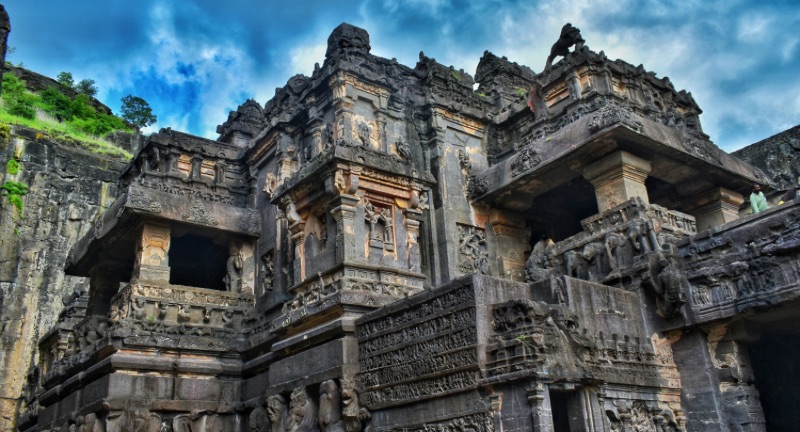
Shutterstock
The Kailasa Temple in Ellora, India, is a monolithic marvel carved entirely from a single rock in the 8th century. Dedicated to the Hindu god Shiva, its scale and detail are unmatched, with complex carvings and towering pillars. The temple is part of the Ellora Caves, which feature Buddhist, Hindu, and Jain temples, symbolizing religious harmony. Kailasa Temple stands as a testament to ancient India’s architectural mastery and cultural wealth.
Petra, Jordan
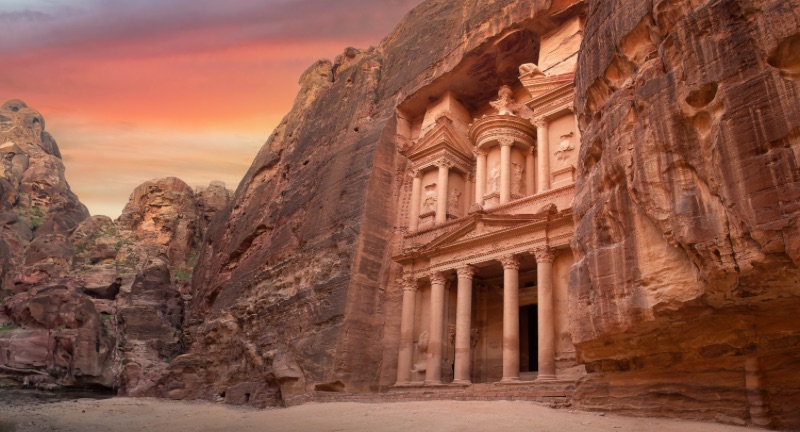
Shutterstock
Petra, also known as the Rose City, is an ancient Nabatean capital carved into the pink sandstone cliffs of Jordan. Dating back to the 4th century BCE, it features temples, tombs, and buildings carved directly from the rock, blending architecture with nature. The most famous structure, Al-Khazneh, is an iconic façade that may have served as a royal tomb or temple. Petra, a UNESCO World Heritage site, remains a stunning symbol of ancient ingenuity and resilience.
Temples of Baalbek, Lebanon
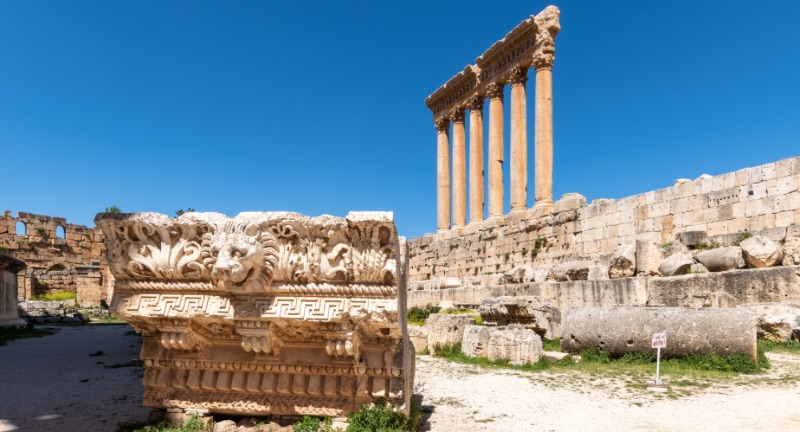
Shutterstock
Baalbek, or Heliopolis, in Lebanon is famous for its grand temple structures, including the Temple of Jupiter, one of the largest in the Roman Empire. Built in the 1st century CE, Baalbek’s massive stone blocks and towering columns showcase the strength and sophistication of Roman engineering. The site reflects a blend of Greek, Roman, and Middle Eastern influences, creating a unique cultural landscape. Today, it stands as a testament to the grandeur and reach of the Roman Empire.
Hypogeum of Ħal-Saflieni, Malta
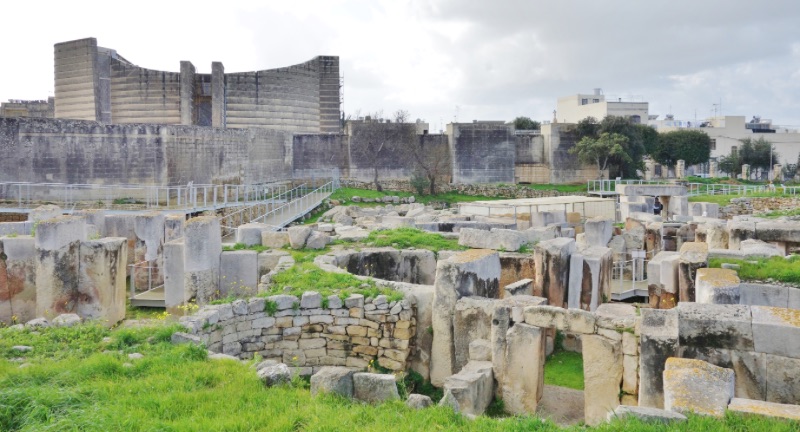
Shutterstock
The Hypogeum of Ħal-Saflieni is an underground temple and burial site in Malta, dating back to around 4000 BCE. This prehistoric site was carved entirely from limestone, with chambers, altars, and passageways that reveal a complex belief system. It is one of the oldest examples of religious architecture in Europe, giving insight into the rituals of Malta’s ancient inhabitants. Its preservation offers a rare glimpse into the spiritual lives of a prehistoric community.
Etemenanki Ziggurat, Iraq
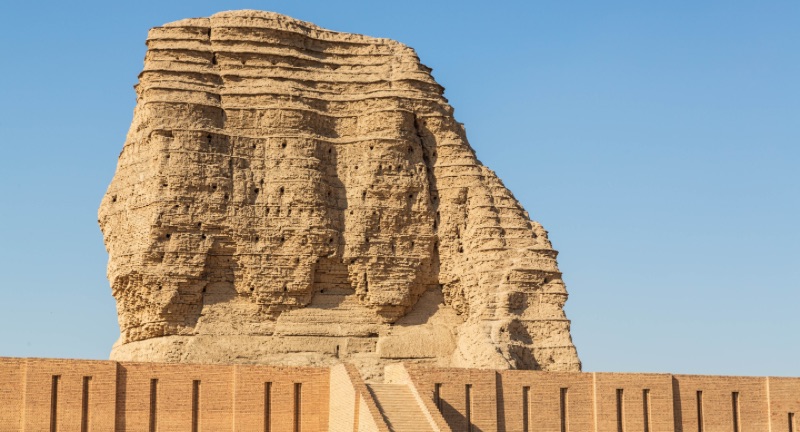
Shutterstock
The Ziggurat of Etemenanki in Babylon, Iraq, was a massive step pyramid dedicated to the god Marduk and believed to inspire the biblical Tower of Babel. Built around 600 BCE, it was a symbol of Mesopotamian power and religious devotion. Although largely in ruins today, the remains reveal the grandeur of ancient Babylonian architecture. This structure is a reminder of the enduring legacy and ambition of Babylonian civilization.
Pura Luhur Uluwatu, Bali
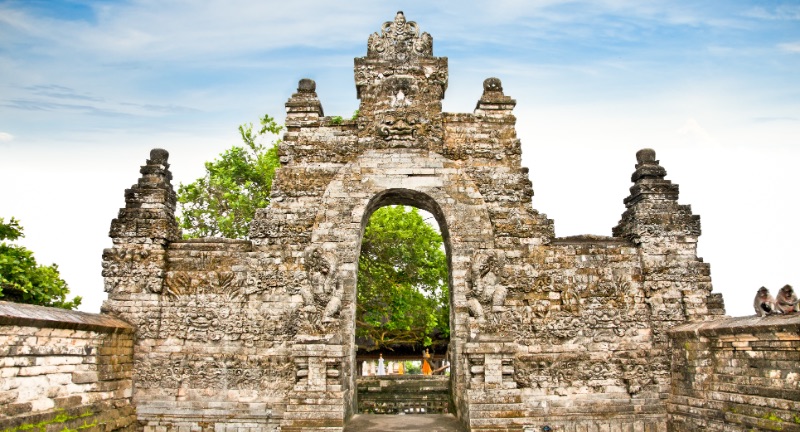
Shutterstock
Pura Luhur Uluwatu is a revered sea temple in Bali, Indonesia, perched dramatically on a cliff overlooking the Indian Ocean. Dating back to the 11th century, it’s dedicated to the sea god Rudra and holds deep significance in Balinese spirituality. The temple’s position creates a stunning backdrop for sunset views, making it a popular destination for visitors. Known for its nightly cultural performances, Uluwatu is a spiritual and cultural landmark in Bali.
Temple of Hercules, Jordan
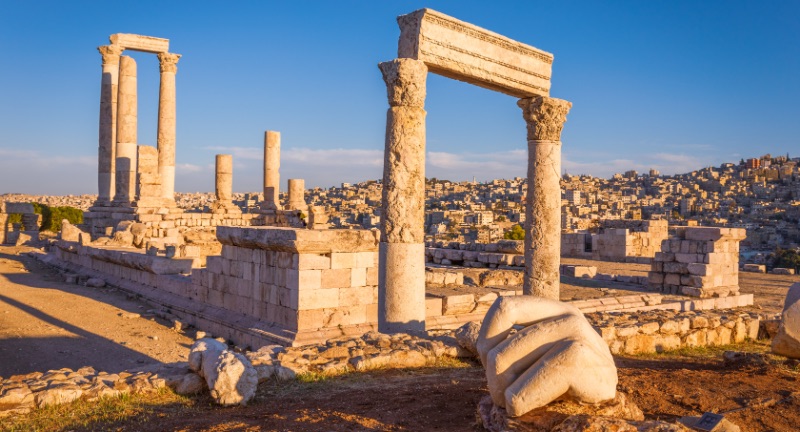
Shutterstock
The Temple of Hercules on Amman’s Citadel Hill in Jordan dates back to the 2nd century CE during the Roman Empire. Though largely in ruins, two massive hands and several standing columns hint at the temple’s original size and significance. It represents the spread of Roman influence and architecture in the region. The site offers panoramic views over Amman, attracting visitors interested in Jordan’s rich historical tapestry.
Parshvanatha Temple, India
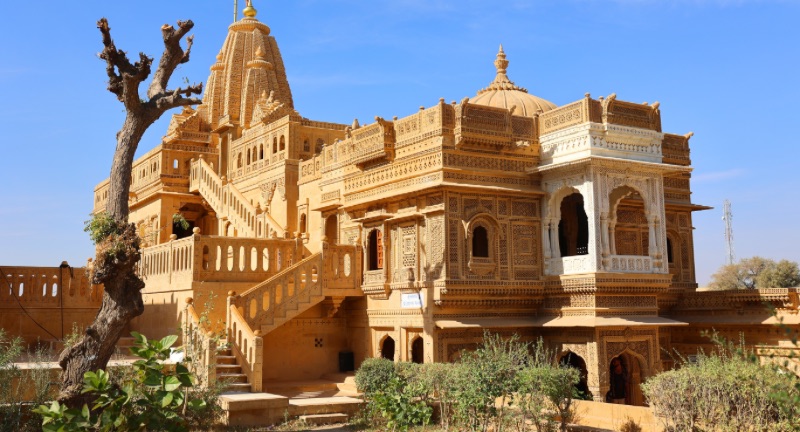
Shutterstock
The Parshvanatha Temple in Khajuraho, India, is a 10th-century Jain temple known for its intricate carvings and artistic beauty. Adorned with images of deities, dancers, and mythical creatures, it reflects the artistry of the Chandela dynasty. This temple is part of the Khajuraho Group of Monuments, a UNESCO World Heritage site celebrated for its architectural and spiritual significance. It serves as a symbol of Jain devotion and the artistic achievements of ancient India.
Conclusion
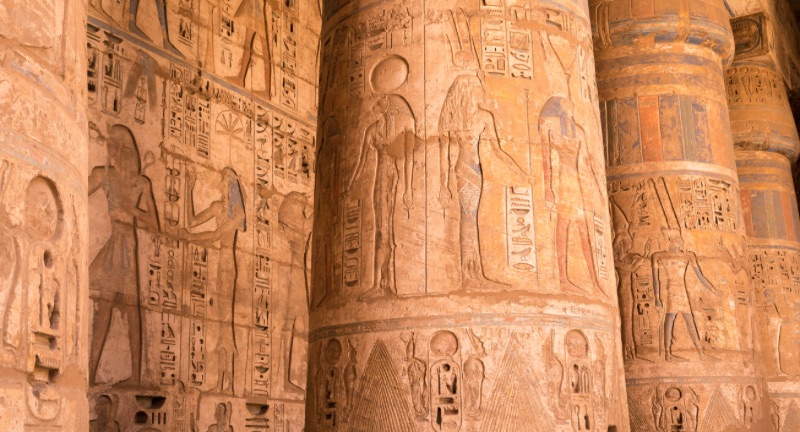
Shutterstock
Visiting these ancient temples isn’t just about seeing old buildings; it’s a way to connect with the creativity, devotion, and resilience of past civilizations. These sites have weathered centuries of challenges, from natural disasters to wars, and yet they still stand strong. Each one is a reminder of our shared human drive to leave something lasting and meaningful. Whether they’re perched on mountains or tucked away in jungles, these temples show us how connected we are to the people who came before.

 News2 months ago
News2 months ago
 Lifestyle3 months ago
Lifestyle3 months ago
 Entertainment3 days ago
Entertainment3 days ago
 Lifestyle2 months ago
Lifestyle2 months ago
 Entertainment3 days ago
Entertainment3 days ago
 Lifestyle2 months ago
Lifestyle2 months ago
 News2 months ago
News2 months ago
 Lifestyle2 months ago
Lifestyle2 months ago





































